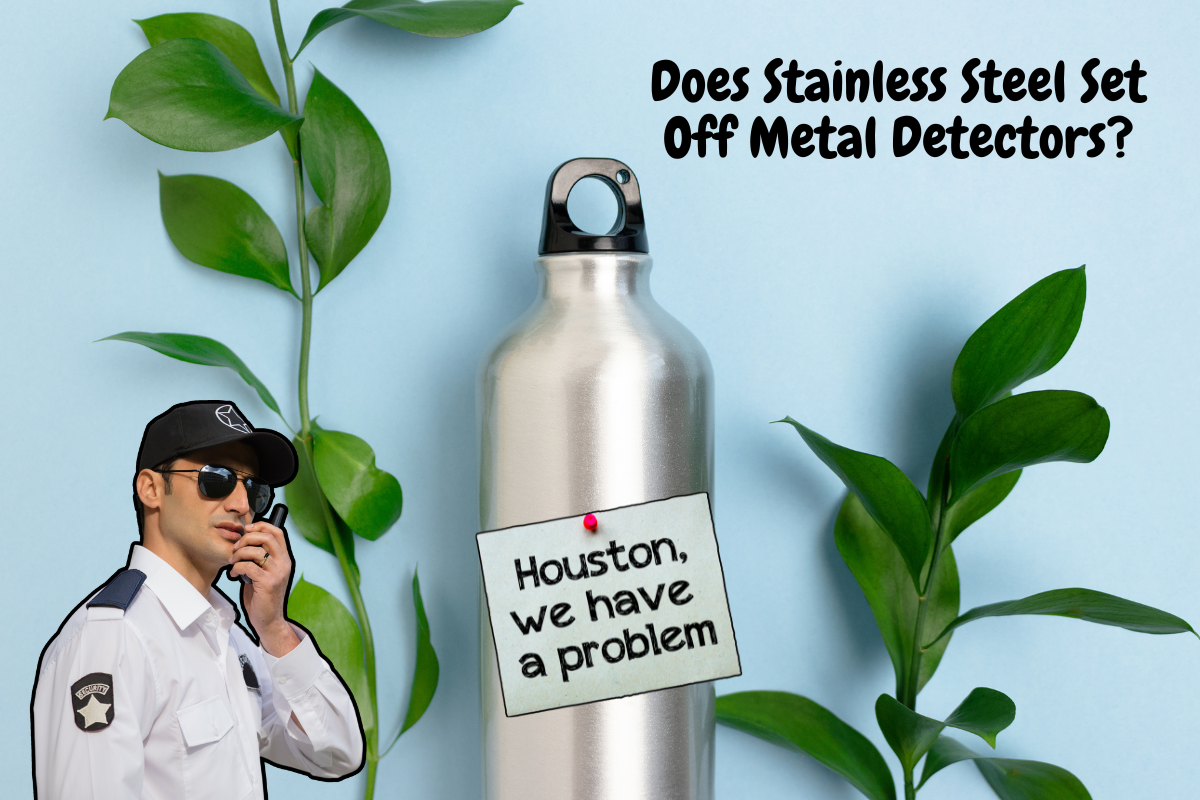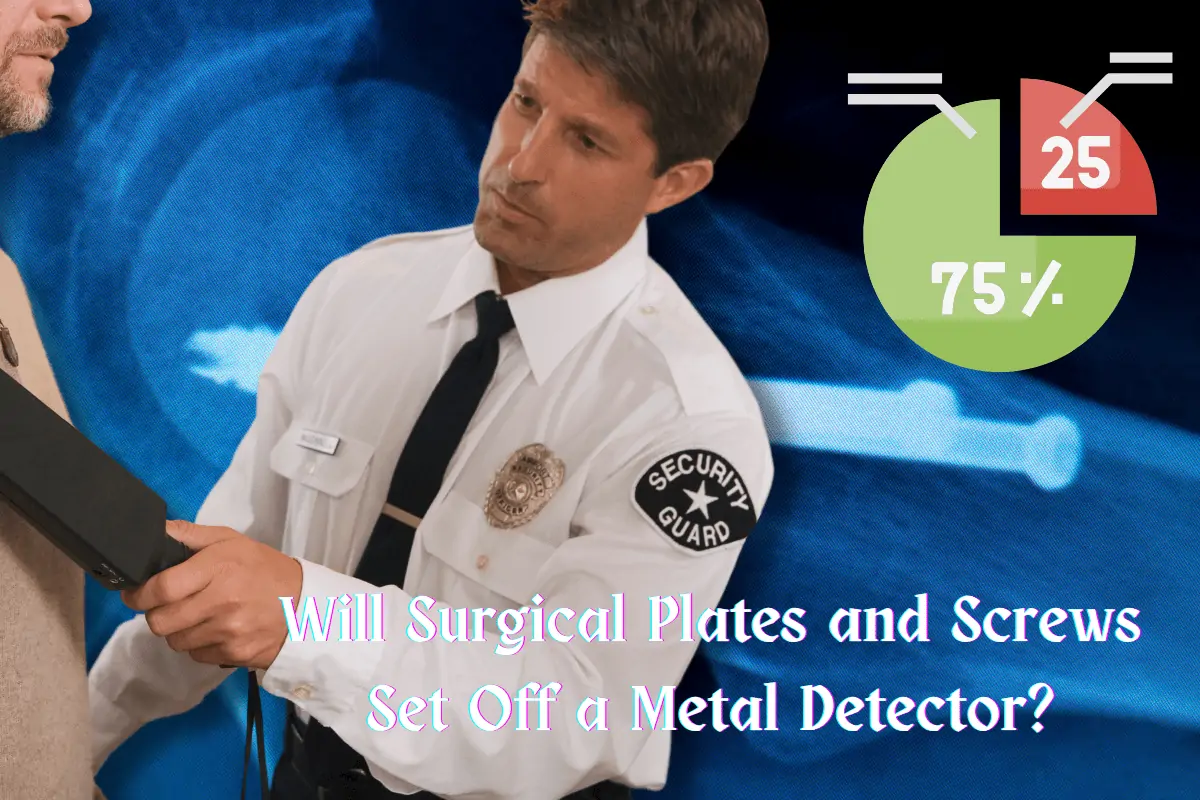If you’re getting ready to travel or starting a new job where security checkpoints are a way of life, it’s only natural to wonder about your piercings.
Specifically, your nipple piercings.
You might be proud and prominent when it comes to your body modification. Or perhaps you’re more reserved in most aspects of life.
Either way, the last thing you probably want is to be stuck in a situation that has you feeling pretty vulnerable.
Unfortunately, metal detectors can have that effect when it comes to body piercings.
So, let’s talk about it.
Welcome to The Conversation

Hey there, I’m Chris.
Let me start by saying, I don’t know much about body modification. I mean I had some ear piercings when I was a little younger.
And most of my arms are covered in tattoos. But I feel like, in today’s world, that’s all pretty tame.
However, I do know a lot about metal detectors and how they work.
I’m glad you found your way here. Because while piercing “experts” online may be telling you one thing, you should really be listening to someone familiar with ferrous and non-ferrous conductivity.
That’s what a metal detector is looking for.
With that being said, let me get you the answers you need.
Will a Nipple Piercing Set Off a Metal Detector?
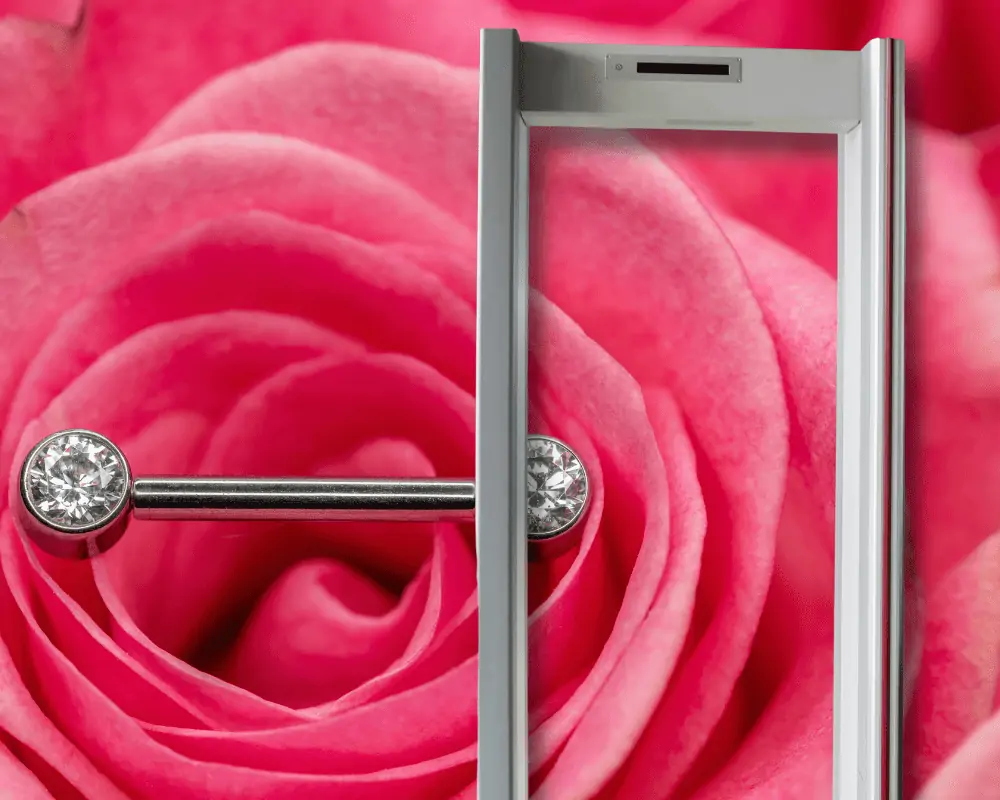
The answer is, that it depends.
Now, before you get too excited (or nervous), let me explain.
A metal detector works by sending out an electromagnetic field. When that field comes into contact with a metal object, it disrupts the field and sets off an alarm.
The kind of metal detector used at security checkpoints is called a walk-through metal detector (WTMD).
It uses low-frequency magnetic fields to sense any ferrous or non-ferrous metals on your body.
So, if you’re nipple piercing is made of any conductive metal, there’s a chance that the WTMD will pick it up.
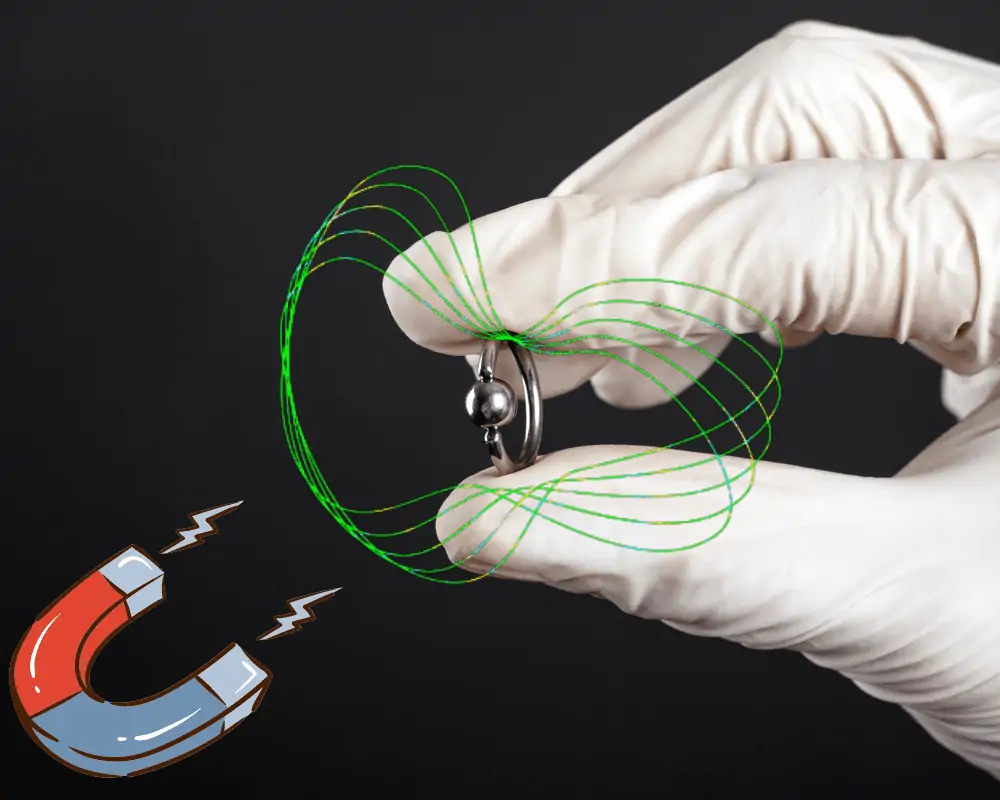
This includes metals like:
- Gold
- Silver
- Copper
- Aluminum
For a better understanding of ferrous and non-ferrous metals, head over to my metal detector beginner’s guide.
The reason I say that there’s a chance your nipple piercings will be detected is that the magnetic field emitted by a WTMD is not that strong.
This means that small, thin pieces of metal may go undetected. In fact, they often do.
It not only depends on the size of your nipple piercing but the sensitivity level of the metal detector.
If it’s set to a low level of sensitivity, there’s a good chance your piercings will go unnoticed.
If the metal detector you’re worried about is located in a school, courthouse, or some other government building, then you’re in luck.
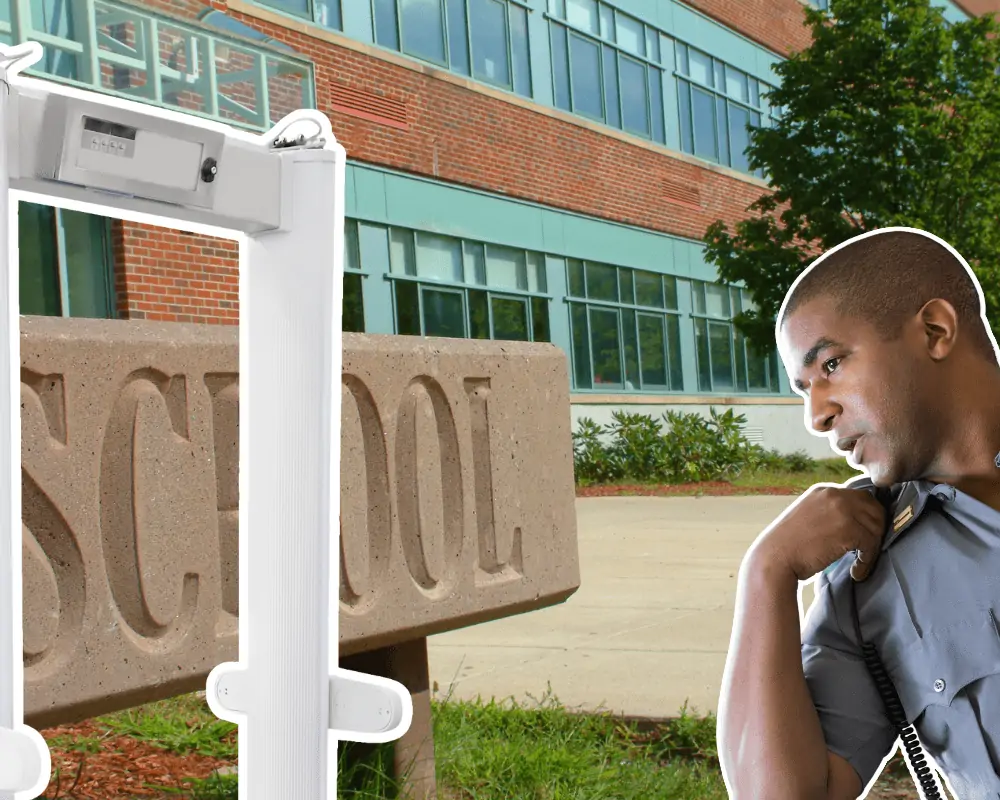
These places often use hand-held metal detectors (HHMDs) as a backup or even a primary scanner.
While these devices are more sensitive than WTMDs, they’re not infallible.
I’ve seen plenty of people with small metal on them scanned by HHMDs without setting them off.
More than anything, it could come down to how the security official is operating the metal detector.
Are they using the right settings? Does it seem like they’re rushing? Or are they scanning too far away from the body?
All of this matters.
But what about airports? Surely, the Transportation Security Administration (TSA) would have no problem detecting nipple piercings, right?
Can Airport Security Detect Nipple Piercings?

Listen, there’s no denying that getting through security at an airport is a sight to behold.
Neverending lines of people shuffling into a tiny portal with the power to ruin your day.
Sounds like fun, doesn’t it?
With the dangers around the world today and in the past, it’s no wonder that airport security has ramped up its policies and technology.
Their use of metal detectors is no different.
So, do nipple piercings set off metal detectors at the airport?

Again, it depends.
If your nipple piercings are metal, you’d think they would set off a metal detector. But now we get back to the issue that metal detectors use very low frequencies that may not pick up on your piercings.
I mean think about it. If airport metal detectors weren’t using low frequencies, wouldn’t everyone with buttons or plain old earrings be stopped for a search?
TSA would be having a complete fit! And you’d probably miss your flight.
Their main goal is to detect dangerous metallic objects like knives and firearms. In comparison, a piercing is pretty small and insignificant.
But that doesn’t mean nipple piercings don’t set off metal detectors at airports.
Of course, you’ll find people with body piercings who have been stopped and searched because their body jewelry triggered the alarm.

The moral of the story is that it could happen, but it’s not likely.
However, TSA does have alternative options to use in place of the standard walk-through metal detector.
These are:
- Advanced Imaging Technology (AIT)
- Pat Down
- Visual and Physical Inspection
If you’re someone who goes through security often, you’ve probably been subjected to at least one of these.
But what do they mean for nipple piercings?
Let’s take a look.
Advanced Imaging Technology

Advanced Imaging Technology (AIT) is the big, bulky machine that you step into for a full-body scan.
It uses electromagnetic waves to create a generic outline image of the human body that can detect both metallic and non-metallic items.
This includes nipple piercings, other body jewelry, or any lump the software deems suspicious.
Don’t worry about this process getting too personal. The old Rapiscan backscatter x-ray machines were replaced in 2013 with AIT.
The Backscatter machine had the disastrous side effect of producing naked images of the scanned individual.
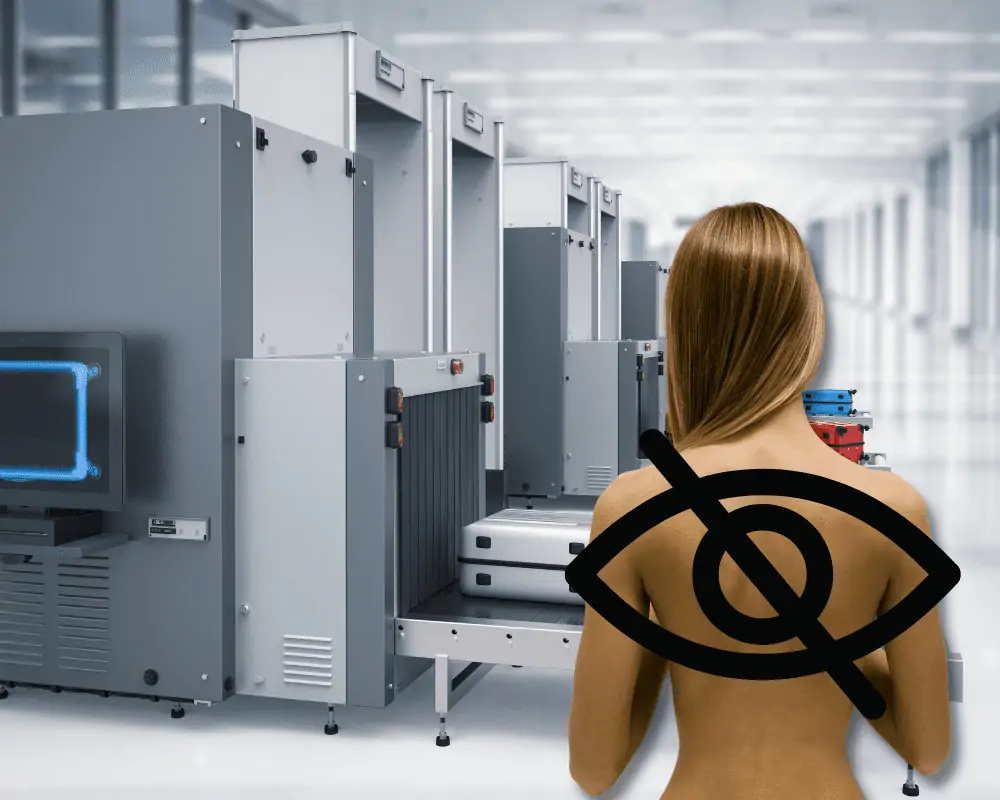
But with AIT, the body outline produced is the same, no matter your gender or body type. However, it does highlight areas on the outline where metal and non-metallic items are.
So, if you have nipple piercings and you go through an AIT machine, it will detect your nipple jewelry.
I should let you know that the use of the AIT machine is random and not used very often.
In fact, if you don’t feel comfortable using the AIT machine, TSA says that you can request a physical screening instead.
Pat Down

A pat down is when a TSA officer uses the front and back of their hands to feel along your entire body for any unusual bulges or lumps.
This includes your hair, neck, sides, arms, legs, feet, and groin area.
For any sensitive areas, like the breasts, the TSA agent (same gender) must use the back of their hand.
During a pat down, the TSA officer may also use a hand-held metal detector.
So, if you have nipple piercings, the TSA officer will more than likely detect them during a pat down.
They may also ask you to remove your shirt so they can get a better look.

However, according to the ACLU, this would only take place in a private screening room and you can request to have someone as a witness.
If you are there alone, TSA must provide a witness for you.
Visual and Physical Inspection
This is a pretty self-explanatory one.
The TSA officer will visually inspect your clothing and body for any suspicious items.
Again, if you are asked to remove any articles of clothing in a private screening room, you have the right to request a witness be present.

So, what does all this mean for nipple piercings and traveling?
Well, if you have nipple piercings (or even if you don’t), there are several methods that airport security can take for screening.
Each one has its own level of effectiveness when used.
If you’re like most travelers, you’ll only have to go through the standard walkthrough metal detector. In which case, it’s more likely that you won’t set off the metal detector.
Nipple Piercing Material

Now that you’re more familiar with how a metal detector works and how airport security uses them, let’s talk about the metal options used for nipple piercings.
The different choices play a part in how well they can be detected.
Are Nipple Piercings Titanium?
Titanium is a very popular metal used in nipple piercings.
It’s mainly because it’s less likely to cause an allergic reaction and it’s a lightweight alternative to steel.
It’s considered a hypoallergenic metal, along with gold and platinum. So if you have any sensitivity to nickel, titanium is a good choice.
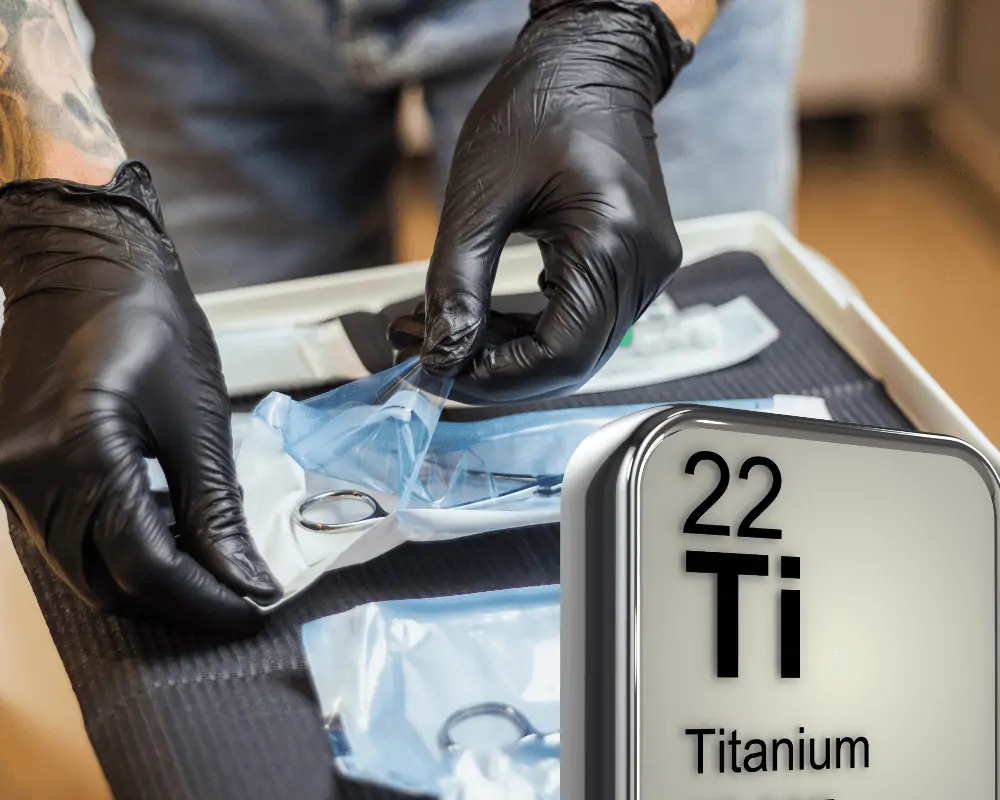
But how do titanium nipple piercings react to metal detectors?
Well, titanium is a non-ferrous metal alloy with extremely low electrical conductivity.
This is because most titanium jewelry isn’t pure metal. It is an alloy, which is a combination of metals like silver or copper.
Because of the low conductive properties of titanium, a metal detector would have to be set to a higher sensitivity setting in order to detect it.
And as I’ve already explained, most security checkpoints use walk-through metal detectors that aren’t very sensitive.
So, unless the security checkpoint is using an AIT machine or even a pat down, your titanium nipple piercing probably won’t be detected.
What Is the Best Metal for A Nipple Piercing?

The best metal for a nipple piercing is surgical stainless steel. For those who are allergic to nickel, this metal has some trace amount but is not enough to cause any skin irritation.
Surgical stainless steel is the best because it is less likely to cause an infection, it’s durable, and it is affordable.
If you’re still concerned about any nickel allergies, titanium is the way to go.
Both surgical stainless steel and titanium are great choices for nipple piercings because they are less likely to set off a metal detector.
However, not completely undetectable. While stainless steel is less conductive than copper, for instance, a metal detector set to the proper threshold will detect it.
But if you want to be extra sure, you have a non-metallic option.
Biocompatible polymers, or plastics, are perfect if you want to 100% guarantee that a metal detector won’t be triggered by your new nipple piercings.
Should You Remove Your Piercings to Travel?

If you’re concerned about nipple piercings setting off a metal detector or getting stopped by TSA, you may be considering removing your piercings before traveling.
And while this is an option, it’s not necessarily the best one.
First of all, nipple piercings are fresh wounds. So, if you remove them too soon, you run the risk of them getting infected.
If your nipple piercings are less than six weeks old, I wouldn’t recommend removing them.
And even if they are older than that, it’s still best to clean them thoroughly before and after removal to avoid any infection.

Another thing to consider is that nipple piercings can close up quickly.
So, if you remove them and then decide you want to put them back in, it may be difficult to do so.
And lastly, nipple piercings can be painful to remove. So, if you’re not prepared for that, it’s probably best to leave them in.
If your nipple piercings are fully healed already and you are comfortable with removing them, don’t wait too long to put them back in.
If it’s been over the standard 6 to 8 weeks since the piercing was done, you still run the risk of the holes closing after 24 hours.
Nipple Piercing Healing

While we’re on the subject of nipple piercings, let’s talk about the healing process.
Based on a number of different professional opinions, the healing time will vary. But the consensus seems to follow the below timeline.
- 6 to 8 weeks of regular cleaning and care to avoid infection.
- 6 months would be the earliest you can expect to be fully healed.
- 12 months is the safest amount of time to fully heal from having your nipples pierced.
So if you’re planning on traveling soon or if you’re already on vacation, I wouldn’t get your nipples pierced just yet.
But, keep in mind that every piercing is different and some may take longer to heal than others.
The most important thing you can do during the healing process is to clean your nipple piercings regularly.

You should start by cleaning them at least twice a day with a saline solution or some soap and warm water. But recommendations vary among professionals.
According to celebrity piercer Brian Keith Thompson (interview with Lexy Lebsack), a sterile saline bath for your nipples is great for avoiding crusty infections.
He suggests mixing “half a teaspoon of sea salt in a large mug of warm water until dissolved, then fill a shot glass or smaller mug with the mixture, cup over the nipple and let it soak for as long as you like.”
Most importantly, be sure to avoid any activities that could irritate your nipple piercings, like using harsh soaps, swimming in dirty water, or sleeping on your stomach.
Nipple Piercing Healing Time

That’s all well and good, right? But let’s say you’ve already gotten your nipples pierced and have taken good care to clean them properly.
And surprise, surprise. You’ve won an all-expenses paid trip to Maui!
I wish.
Have your nipple piercings had long enough to heal so you can consider taking them out? Can you replace them with a plastic or a PTFE alternative?
While the six to eight weeks mentioned is more of a minimum time frame, the recommended healing time for nipple piercings is at least 6 months.
So keep that in mind when mulling over any removal.
Do Nipple Piercings Ever Fully Heal?

But is 6 months even long enough for your nipples to be completed healed? Are you now safe to remove your piercings before a day of traveling?
I mean, nipples do take a lot more time to heal than other parts of your body.
Well…
After piercing your nipples, it will take around 12 months for the piercings to fully heal, according to board-certified dermatologist Blair Murphy-Rose MD.
Of course, this can change depending on several factors.
Like the frequency of rubbing or touching occurring, and the size of your breasts.
So, anything less than a year probably isn’t safe to remove your piercings for an extended time.
For a more informative body piercing experience, I recommend checking out “The Piercing Bible” by Elayne Angel.
This book will cover everything from choosing the perfect piercer, pain levels for each area of the body, and following the best and most proven aftercare practices.
FAQs About Metal Detectors and Nipple Piercings
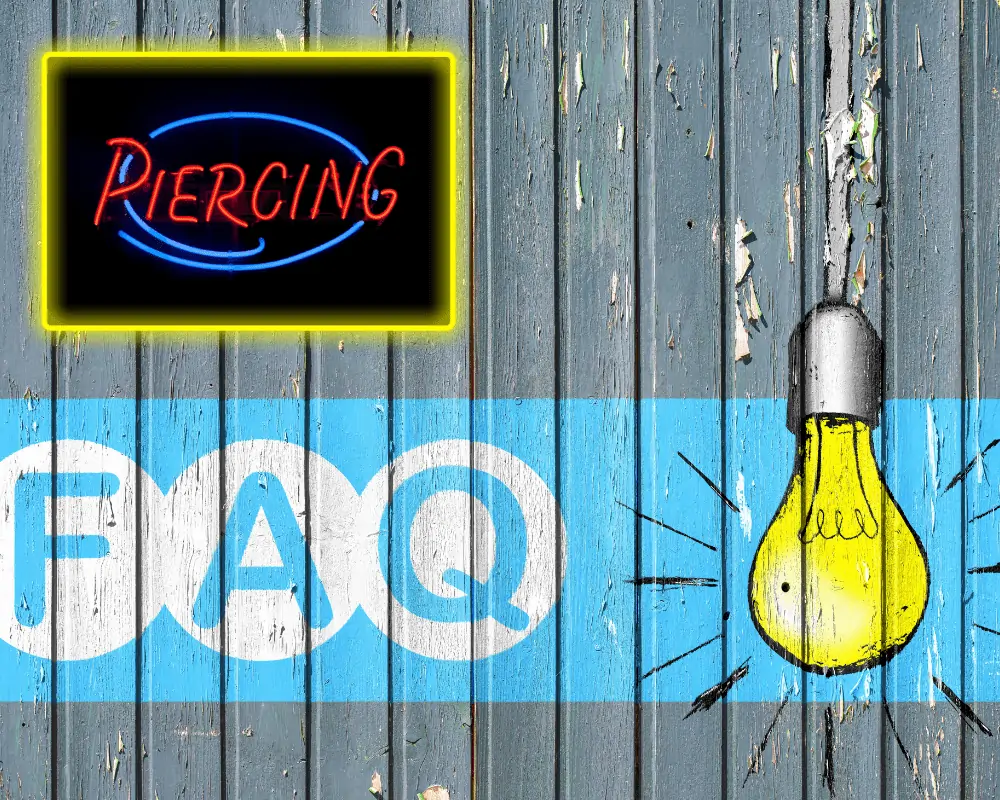
Still concerned about your upcoming trip?
I understand. It can be nerve-wracking.
Here are two more questions I researched answers for you. Hopefully, it’ll help put you at ease.
Does TSA Stop You for Nipple Piercings?
TSA will not stop you specifically from suspecting you of having nipple piercings. And if you tell a TSA agent of your piercings beforehand, it doesn’t mean you’ll be pulled aside.
Most likely, they’ll simply ask you to walk through the metal detector.

Again, chances are that your nipple piercings won’t set off the metal detector.
But if it does, the extent of further inspection will be up to the TSA agent on hand.
If I were you, I just wouldn’t say anything unless you set off the metal detector.
No need to raise suspicion for something that probably won’t set off the alarm anyway.
TSA Policy on Body Piercings
In an effort to avoid an alarm, TSA asks that you remove any jewelry before the screening process.
However, in the instance of a recent body piercing where you don’t feel comfortable removing it, TSA does have a regulated policy.
Per TSA’s website, “certain metal body piercings may cause the machines to alarm and a pat-down may be required. If additional screening is required, you may be asked to remove your body piercing in private as an alternative to the pat-down”.

Unfortunately, this statement leaves a lot of questions unanswered.
For instance, the need to remove the piercing, in my opinion, probably wouldn’t apply to nipple piercings.
It would serve no purpose. And a simple pat down should suffice to determine you and your nipple piercings are no threat to other passengers.
After some research, I found an article from CNN in 2008 that details the story of a woman who was forced to remove her nipple piercings at the request of TSA officials.
This embarrassing moment led to outrage and ultimately changed TSA policy to accept a visual inspection over the removal of body piercings.
Safe Travels
I know we covered a lot here, so let me wrap it up for you.
Nipple piercings will not set off a metal detector, as long as the sensitivity setting is low enough.
In almost all walk-through metal detectors, the sensitivity level is never set too high. Any considerable threat that security is looking for, doesn’t need a strong magnetic field to be detected.
So for those doing your best to sneak a flask on board, fat chance.
As for nipple piercings and the TSA, nipple piercings are not worth singling someone out for special screening. If you have nipple piercings, you shouldn’t have any problem getting through security without an issue.

Of course, there is always the possibility that your nipple piercing may set off a detector or other form of screening.
If so, remember your rights.
- You do have the right to a private screening room for any pat down or physical search.
- You do have the right for a witness to present.
- You do have a right to be physically searched by a security official of the same gender.
And if you’re considering removing them, even temporarily, remember that your nipple piercings don’t fully heal until 12 months after they’re inserted.
I hope I’ve answered your questions and helped put your mind at ease.
Now go and catch your flight, worry-free.



